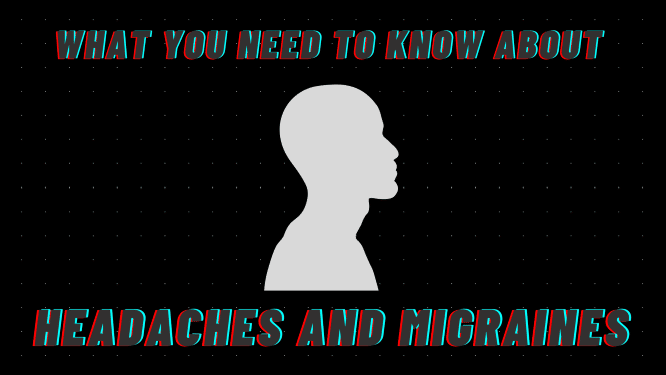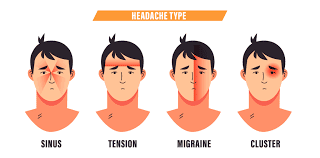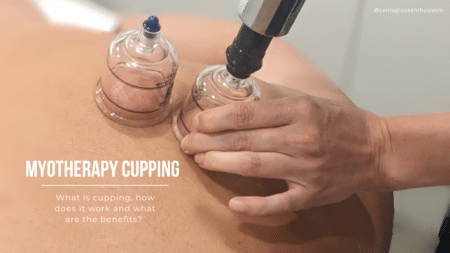Headaches & Migraines

Do you suffer from headaches and migraines on a regular basis? Let me tell you, you’re not alone!
Headaches and migraines are extremely common. In fact, majority of Australians will suffer with a headache every now and then. Symptoms can be easily managed with the right treatment plan. Here’s what you need to know about the types of headaches, ‘red flag’ symptoms and treatment options for you!
There are many different types of headaches you may experience, with tension headaches being the most common. Headaches can also vary in intensity and duration. Due to these differing characteristics, they can be sort into many categories. Some of the common headaches you may have heard of include:
- Tension headaches (primary)
- Hormonal headaches (secondary)
- Migraines (primary)
“Globally, it has been estimated that prevalence among adults of current headache disorder (symptomatic at least once within the last year) is about 50%. Half to three quarters of adults aged 18–65 years in the world have had headache in the last year and, among those individuals, 30% or more have reported migraine.”
World Health Organization (WHO), 2016
What is the difference between a primary or secondary headache?
A primary headache is the main condition with no other underlying causes. Secondary headaches occur when there is another underlying condition, and the headache is accompanying that condition. Treatments between primary and secondary headaches may vary.
Common Presentations
Tension headaches (Primary)
Tension headaches often feel like a dull ache throughout the head. Patients often present with the feeling of a tight band around the head, with light to moderate discomfort. They can be accompanied by a tight or sore feeling in the neck, forehead and scalp. A distinguishing characteristic of a tension headache is discomfort bilaterally (on both sides of the head). Tension headaches can be associated with stress, fatigue/lack of sleep, and poor posture.
Migraines (Primary)
Migraines present as severe and intense pulsing and/or throbbing deep in the head. The pain is often debilitating, and can last many days. Migraines may also be accompanied by nausea, vomiting, blurred vision, dizziness, sensitivity to light and/or sound. Some distinguishing characteristics of migraine headaches are the severity of secondary symptoms, intensity of pain and pain presenting unilaterally (on one side of the head).
One in five migraine sufferers will also experience visual disturbances known as auras. Auras are warning signs that occur before a patient experiences a migraine. The warning symptoms may be flashing lights, blind spots, or zigzag lights.
Migraines are quite common, with almost 2 million people in Australia suffering from migraines.
Common triggers for migraine headaches include:
- Hormonal changes
- Stress
- Sleep duration/disturbances
- Some foods (common foods include: chocolate, artificial sweeteners, aged cheese)
- Some drinks (common drinks include: alcohol, caffeine)
‘Red Flag’ Symptoms
While headaches are extremely common, there are occasions in which some headaches may be the result of an underlying condition that may be much more sinister, such as a stroke, an aneurysm, or a brain tumour.
If you are experiencing any of the below symptoms, please seek medical advice immediately:
A headache that…
- continues to increase in intensity and does not subside
- occurs after a head injury
- wakes you up from sleep
- presents with one-sided numbness, weakness and/or loss of sensation
- is accompanied by severe face and neck pain
- is new or unusual than what you may have experiences before
- comes on suddenly and is extremely intense
- is accompanied with pins and needles, numbness, tingling and/or altered sensation in the arms.
Managing Symptoms and Treatments for Headaches and Migraines
Headaches and migraines can be easily managed with the right treatment plan. Like many things, what works for some may not work for others – and that’s ok. You just need to find what works for you.
Allied Health Services
There are a number of allied health care practitioners ready to help you! Headaches are so common that most health practitioners will have their own set of tips and tricks to help you. While the methods may vary, the success rate of reduction in headaches following physical therapy is high.
Modalities include (but are not limited to):
- Osteopathy
- Myotherapy
- Chinese Medicine and Acupuncture
- Reflexology
- Physiotherapy
- Chiropractic Care
- Remedial Massage
Drink Some Water
Hydrating your body can be an effective way to beat a headache. Is it recommended that an adult drinks roughly 2 liters of water daily. The solution to drinking more water may be as simple as keeping your drink bottle next to you while you work. You may like to add a reminder on your phone or laptop.
Don’t forget, coffee dehydrates the body. It is suggested that one cup of coffee dehydrates your body by four cups of water. If you look back to one of the common triggers for migraine headaches, you’ll see caffeine listed there. If you’re a big coffee drinking, perhaps try to slowly cut down your caffeine in take over time. You might find a reduction in those headaches.
Tracking
As mentioned above, headaches and migraines can have triggers. Common triggers include:
- Dehydration/lack of water intake
- Increased sugar intake
- Increased caffeine intake
- Lack of sleep and fatigue
However, you may also like to track your headaches to gain an understanding of how best to manage them. You can do this by tracking and/or altering your daily activities.
Begin by tracking: time, what you were doing, what you ate and when, the intensity of the headache and how long it lasted.
For example: First headache began at 9am, 30 mins after waking up, before breakfast, low intensity. Subsided after my shower. Returned around 12:30pm before lunch, high intensity. Didn’t subside. Intensity remained the same all afternoon. Fell asleep with headache.
You can use apps like My Fitness Pal to track what you’re eating and how much water you’re drinking.
If you are struggling to manage your symptoms, please seek the advice from your GP or another trusted health care practitioner.
Written by Ashlee Crisp






